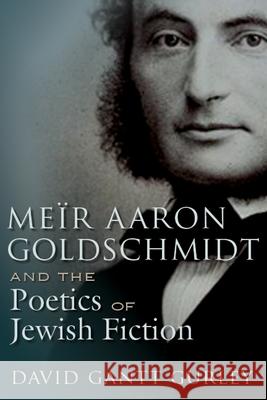Meïr Aaron Goldschmidt and the Poetics of Jewish Fiction » książka
Meïr Aaron Goldschmidt and the Poetics of Jewish Fiction
ISBN-13: 9780815634867 / Angielski / Twarda / 2016 / 232 str.
Meïr Aaron Goldschmidt and the Poetics of Jewish Fiction
ISBN-13: 9780815634867 / Angielski / Twarda / 2016 / 232 str.
(netto: 383,65 VAT: 5%)
Najniższa cena z 30 dni: 301,64 zł
ok. 13-18 dni roboczych.
Darmowa dostawa!
MeIr Aaron Goldschmidt and the Poetics of Jewish Fiction presents a bold new reading of one of Denmark's greatest writers of the nineteenth century, situating him, first and foremost, as a Jewish artist. Offering an alternative to the nationalistic discourse so prevalent in the scholarship, Gurley examines Goldschmidt's relationship to the Hebrew Bible and later rabbinical traditions, such as the Talmud and the Midrash. At the same time, he shows that Goldschmidt's midrashic style in a secular context predates certain narrative movements within Modernism that are usually associated with the twentieth century and especially Czech writer Franz Kafka. Goldschmidt was remarkable in his era, both as a writer who explored his peripheral identity in the mainstream of European culture and as a writer of the first truly Jewish bildungsroman. In this groundbreaking study of Goldschmidt's narrative art, Gurley refashions his position in both the Danish and Jewish literary canons and introduces his extraordinary work to a wider, non-Scandinavian audience.
Meïr Aaron Goldschmidt and the Poetics of Jewish Fiction presents a bold new reading of one of Denmark’s greatest writers of the nineteenth century, situating him, first and foremost, as a Jewish artist. Offering an alternative to the nationalistic discourse so prevalent in the scholarship, Gurley examines Goldschmidt’s relationship to the Hebrew Bible and later rabbinical traditions, such as the Talmud and the Midrash. At the same time, he shows that Goldschmidt’s midrashic style in a secular context predates certain narrative movements within Modernism that are usually associated with the twentieth century and especially Czech writer Franz Kafka. Goldschmidt was remarkable in his era, both as a writer who explored his peripheral identity in the mainstream of European culture and as a writer of the first truly Jewish bildungsroman. In this groundbreaking study of Goldschmidt’s narrative art, Gurley refashions his position in both the Danish and Jewish literary canons and introduces his extraordinary work to a wider, non-Scandinavian audience.











